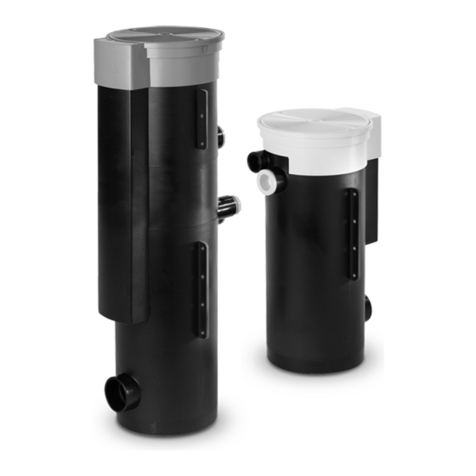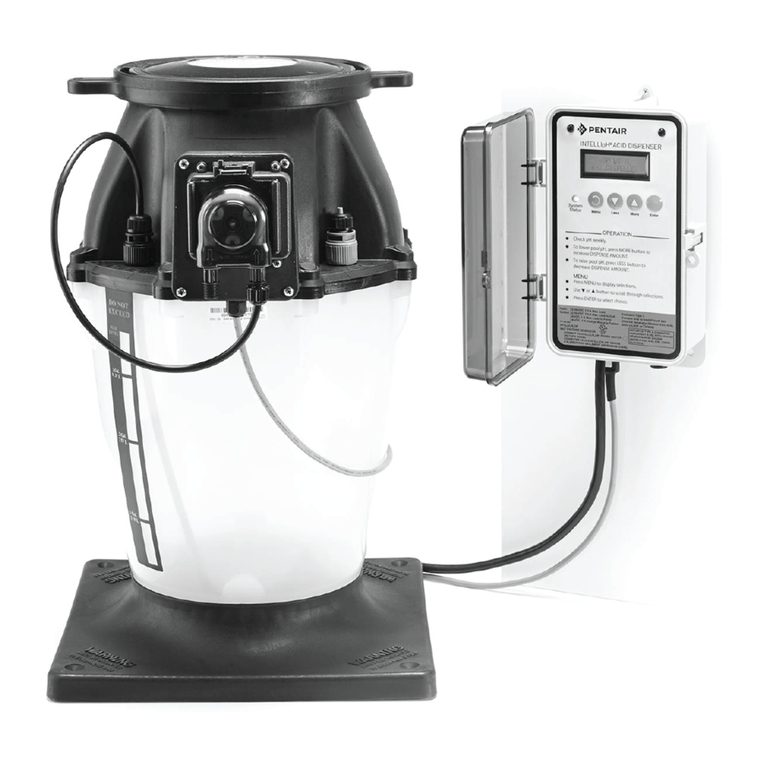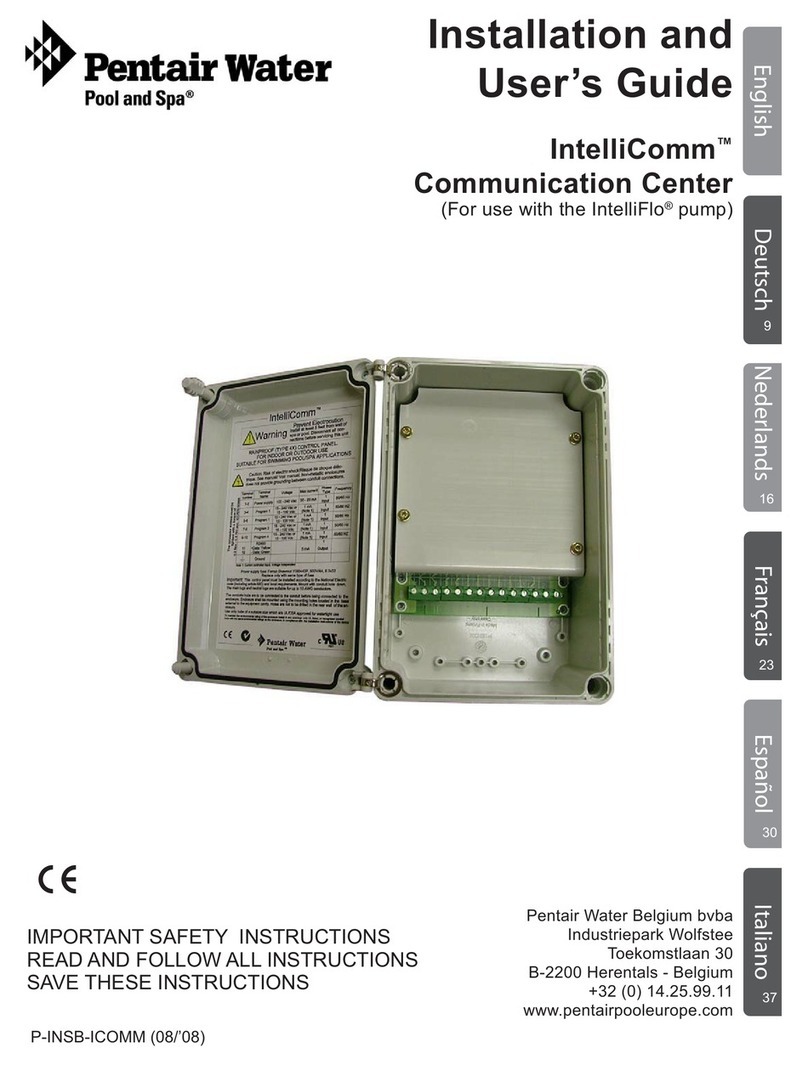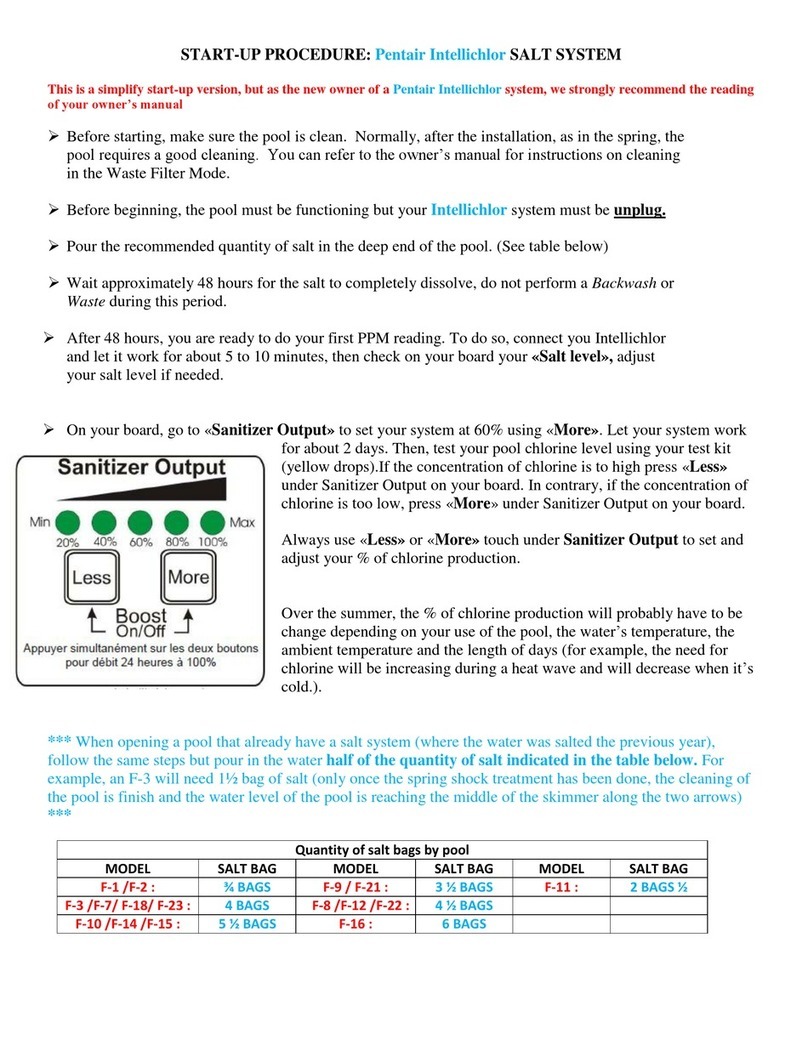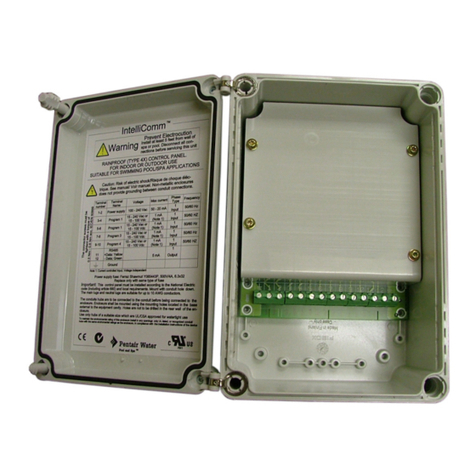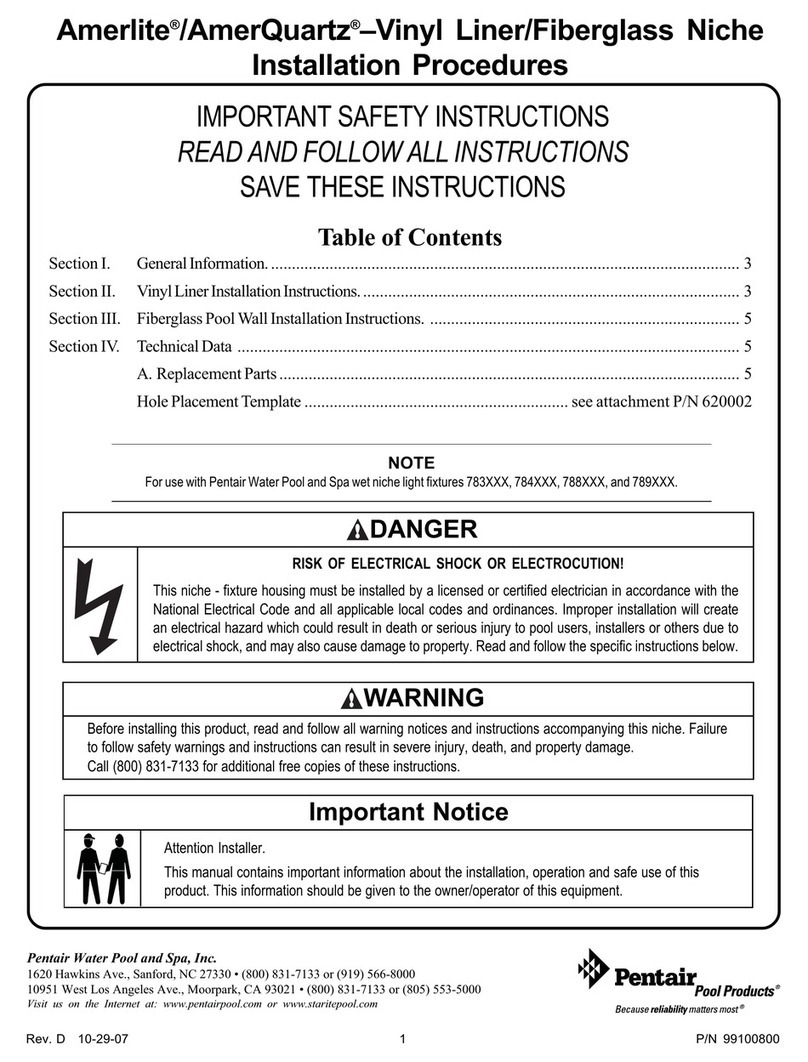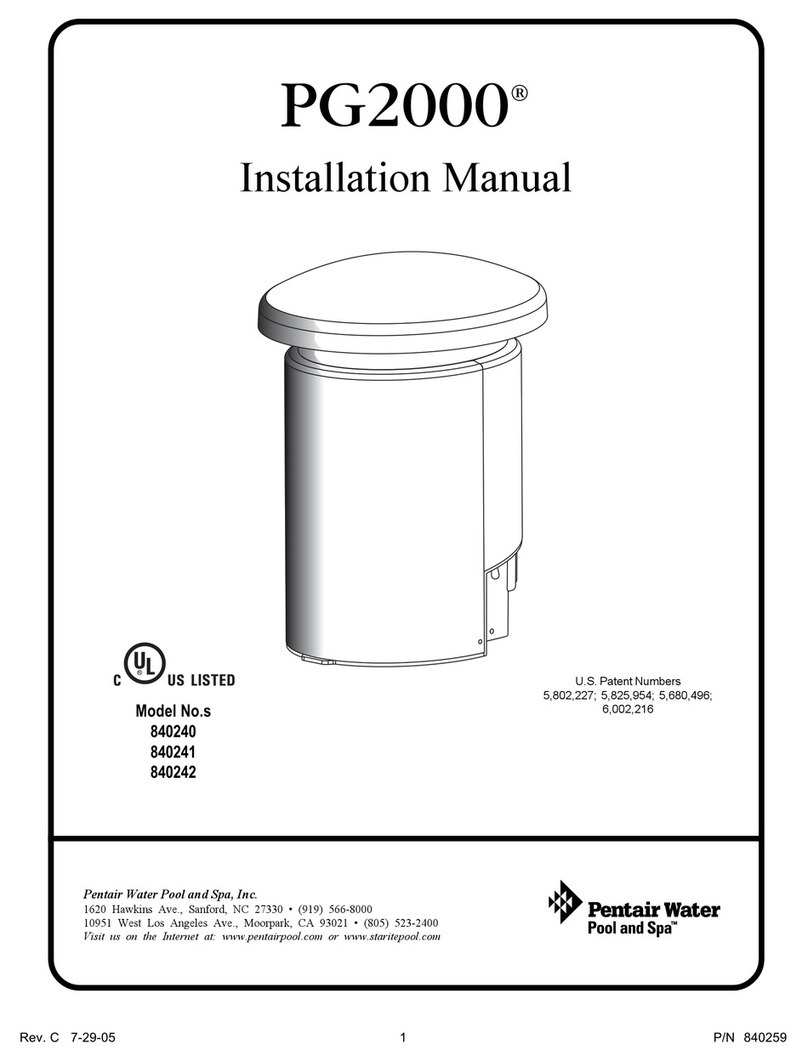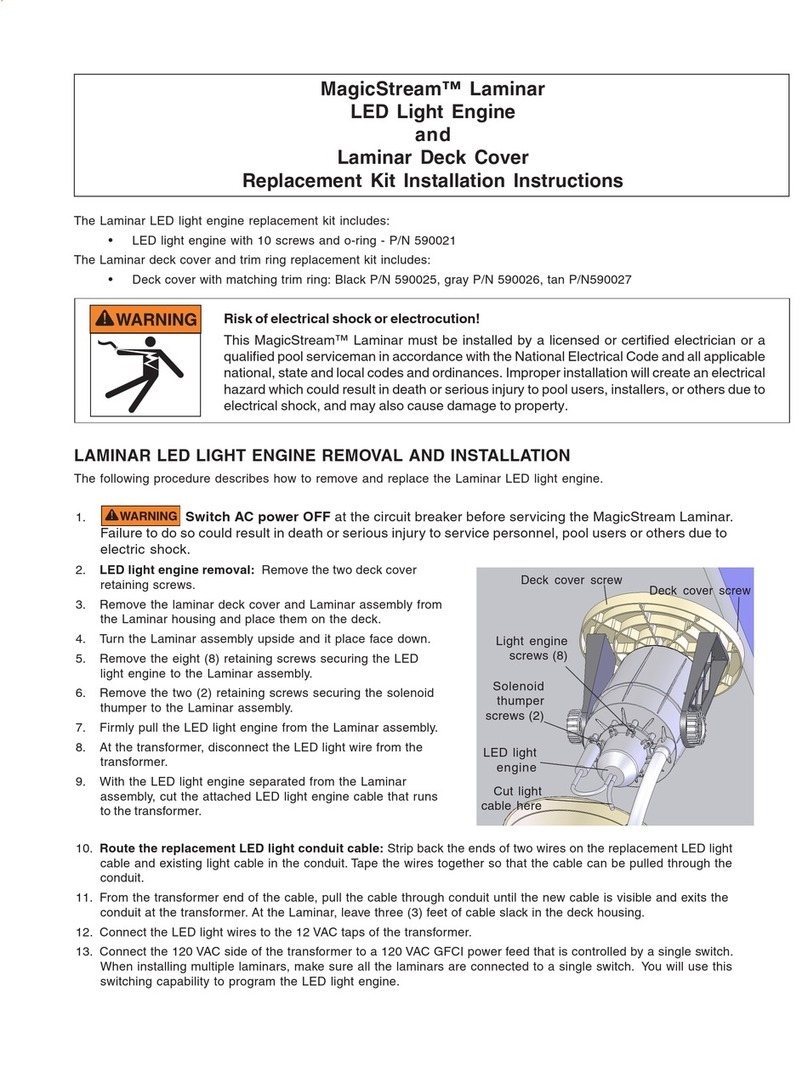
#300 & #302 CHLORINE/BROMINE FEEDERS
It is important to read all information BEFORE proceeding with the installation.
he information will guide you in installing your feeder properly and to avoid
problems due to improper installation.
IF YOUR POOL OR SPA HAS COPPER PLUMBING . . . STOP!!
Never install the feeder into copper plumbing as pipe damage will occur. (See
Equipment Safety CAU ION sheet enclosed). NOTE: If heaters are used, a
Fireman’s Switch or equivalent must be installed to prevent possible damage
and improper operation of Check Valve and other equipment subject to heat
damage.
WHERE TO INSTALL YOUR FEEDER
Series #300 and #302 are designed for EXIS ING pools or spas or new pools or
spas where conditions are such to make permanent installation into the return
line impractical. he outlet line must be installed after the heater. If your pool does
not have a heater, then it must be installed after the filter. (see Fig. A & B)
DAMAGE TO YOUR HEATER COULD RESULT IF HIGHLY CHLORINATED
WATER FLOWS THROUGH IT.
If your pool has a heater, install the line to the feeder between the filter and
heater. If your pool does not have a heater, install the inlet line between the
pump and the filter. Refer to installation drawings A & B for your particular
condition. Choose a site where feeder can be installed in a vertical position.
Always install as far from any metal equipment as practical since fumes, etc.
can corrode them. If optional corrosion resistant check valve is required, refer
to installation instructions before next step.
INSTALLATION INSTRUCTIONS
Position feeder close to filter and cut tubing to desired lengths. Be careful to cut
ends straight.
ATTACH INLET LINE TO FEEDER
Screw control valve into side of feeder. Use teflon tape to seal threads. Push
compression nut over tubing and then push tubing onto tapered end of control
valve. ighten nut firmly by hand.
ATTACH OUTLET LINE TO FEEDER
Screw Combination check valve elbow into bottom of feeder. Refer to drawing on
other side. Use teflon tape to seal threads. CAUTION do not overtighten. Damage
to threads or check valve could occur. Push compression nut over tubing end.
hen push tubing onto tapered end of elbow. ighten nut firmly by hand.
INSTALL INLET LINE IN PLUMBING
(Line to side of feeder). urn off pump and timer switches. Drill 3/8" hole in
plumbing, remove burrs and install saddle clamp assembly. See drawing on other
side. Attach inlet line by first pushing compression nut over tub end. hen push
tube onto tapered end of tube fitting. ighten nut firmly by hand.
INSTALL OUTLET LINE IN PLUMBING
(Line from feeder.) Drill 3/8" hole in plumbing (AF ER the heater. If no heater,
drill after filter.) and remove burrs. See drawing on other side. Install saddle
clamp assembly. Attach outlet line by first pushing compression nut over tube
end. hen push onto tapered end of tube fitting. tighten nut firmly by hand.
Installation is now complete.
OPERATING INSTRUCTIONS
Before start up of feeder, your pool should be properly conditioned and the
residual should be 1.0 to 1.5 ppm, (Bromine 2.0-4.0 ppm). he water in a newly-
filled pool should be properly conditioned to insure maximum effectiveness of
the feeder. Consult your local dealer for water conditioning information for your
area.
1. Remove cap of feeder and fill with proper size tablets.
Series 300 uses 1" or 3" dia. tablets
Series 302 uses 1" dia. tablets in Spa Chamber.
2. Making sure O-Ring is clean, lubricated with Lifegard Silicone and is in
place, replace cap. Hand tighten only.
3. urn on pump and timer switches.
4. Adjust control valve according to your pool/spa size. Use a test kit. It is
recommended that the chemical residual be checked daily for the first 5 days.
Remember . . . hot days, higher water temperature or increased pool/spa activity
will cause your pool/spa to use more sanitizer. When possible, increase the feed
rate a day or two in advance. Because the sanitizer demand in your pool/spa varies
and is dependent on many factors (sunlight, bather load, water temperature, etc.)
your valve setting may have to be changed from time to time to adjust to these
conditions. For example, the winter setting may be #2 while the summer setting
is #3. Check the residual daily to find the ideal setting. Note: Higher numbers
dispense more chemical. Small gradual changes are imperative for control.
HOW TO RECHARGE FEEDER
1. urn control valve to the closed position. SHUT OFF PUMP.
2. Wait one minute. his will allow water and fumes to drain from feeder.
3. Leave control valve closed and turn on pump. he check valve will prevent
water from entering the feeder.
4. Remove cap and fill with proper size tablets or sticks. (See Operating
Instructions #1)
5. Making sure O-Ring is clean, lubricated with Lifegard Silicone and is in
place, replace cap. Hand tighten only.
6. Open control valve to original setting. Inspect inlet and outlet line each
time feeder is recharged. Replace lines yearly if necessary.
BELOW WATER LEVEL INSTALLATION
Feeder should be installed above water level whenever practical. If installed
below water level, a drain valve must be installed to prevent spillage and
dangerous splash back of high chlorinated water during recharging. Drill and
tap a ¼" MP hole at the same level the control valve is located. Make sure
there is no water or tablets inside the feeder before drilling. Install optional drain
valve, Part R172060, or suitable chemical resistant drain valve.
BELOW WATER LEVEL RECHARGING INSTRUCTIONS
1. Shut off pump and timer switches.
2. Shut off control valve.
3. Place a clean container under drain and open drain valve.
4. Exercise extreme caution when opening or servicing feeder. Do not inhale
fumes. Wear protective gear. Remove cap. Water will now drain from feeder.
Empty container back into pool or spa.
5. Close drain valve. fill with proper size tablets or sticks.
6. Making sure O-Ring is clean, lubricated with Lifegard Silicone and in
place, replace cap.
7. urn on pump and timer switches.
8. Reset control valve to original setting. Inspect inlet and outlet line each
time feeder is recharged. Replace lines yearly if necessary.
Features:
• No special venting required.
• Completely enclosed-no escaping gases.
• Positive external no-clog control valve.
• Feeder is designed to automatically lower the
water level so tablets are not soaking
during off period of pump. This allows more
efficient use of tablets.
• No equipment damage.
Feeds sanitizer directly to pool or spa.
• All parts replaceable.
• To prevent over feeding during use
completely close the control valve and the
built in check valve will prevent chemical from
being fed into pool or spa.
YOUR LIFEGARD™FEEDER IS THE MOST EFFICIENT AND TROUBLE-FREE AUTOMATIC FEEDER YOU CAN BUY
BUT IT CAN ALSO BE DANGEROUS TO YOU AND YOUR EQUIPMENT. PLEASE FOLLOW INSTRUCTIONS EXACTLY AND
HEED ALL CAUTIONS. YOUR SAFETY AND THE PROTECTION OF YOUR EQUIPMENT IS OUR FIRST CONCERN.
DANGER
READ CAREFULLY
This feeder is designed to use only CLEAN Trichlor-s-trizinetrione OR CLEAN Bromine tables - slow dissol ing type. Ne er use dirty tablets. UNDER NO CIRCUMSTANCES MIX
Trichlor or Bromine with Calcium Hypochlorite, with other forms of concentrated chlorine or with other chemicals. Keep inside of feeder clean of dirt and debris at all times.
FIRE AND/OR EXPLOSION MAY RESULT.
NEVER use oils or grease to lubricate o-ring. Oil in contact with Trichlor OR Bromine may result in FIRE. Lubricate o-ring with Lifegard Silicone o-ring Lubricant ONLY, a ailable at
your dealers. If shock treatments or Algaecides containing chemicals other than sanitizers tablets in feeder must be used, turn off Feeder OR remo e tablets until the shock or Algae
treatment is complete and all granules ha e dissol ed. Failure to do so may result in granules mixing in feeder causing FIRE AND/OR EXPLOSION. The shock or algae treatment
dissol ed in water is safe with tablets. If you are not the original owner of this feeder, not sure which chemicals was used, or if dirt and/or debris inside feeder, be SAFE and flush
thoroughly with fresh water. CAUTION SHOULD BE USED WHEN REMOVING CAP. DO NOT INHALE FUMES.
CALCIUM HYPOCHLORITE IS NOT TO BE USED IN ANY FORM.
